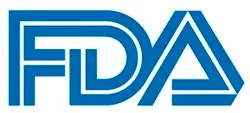Article
FDA Grants Fast Track Designation to Dianhydrogalactitol for Newly Diagnosed Glioblastoma
Author(s):
The FDA has granted a fast track designation to dianhydrogalactitol for the treatment of patients with newly-diagnosed unmethylated glioblastoma.

The FDA has granted a fast track designation to dianhydrogalactitol (VAL-083) for the treatment of patients with newly-diagnosed unmethylated glioblastoma (GBM).1
VAL-083 is a first-in-class small molecule therapeutic with a novel mechanism of action. The agent has displayed clinical activity against various cancers, including central nervous system, ovarian, and other solid tumors.
"We believe fast track designation is indicative of [dianhydrogalactitol’s] potential to improve outcomes for patients with glioblastoma, the most aggressive form of brain cancer," Robert E. Hoffman, president and chief executive officer of Kintara, stated in a press release. "We look forward to announcing top-line data from the international registrational phase 2/3 GBM AGILE trial [NCT03970447] around the end of calendar year 2023. Fast track designation allows us to work closely with the FDA and may expedite our commercial launch of [dianhydrogalactitol], if approved."
Prior data from a phase 2 trial (NCT02717962) in patients with GBM who had an unmethylated promoter of the MGMT gene showed that, among 36 efficacy-evaluable patients, dianhydrogalactitol elicited a median progression-free survival (PFS) of 10.0 months (95% CI, 8.2-10.8).2 The median overall survival (OS) for these patients was 16.5 months (95% CI, 13.3-19.3). Though it was not a head-to-head trial, the PFS and OS data for dianhydrogalactitol represented improvements over historical comparisons for this patient population.
The phase 2 study enrolled patients who were at least 18 years old with recurrent or progressive GBM (cohort 1) and patients with newly diagnosed GBM who had completed chemoradiation treatment with temozolomide and received no subsequent maintenance temozolomide (Temodar).3 Other key inclusion criteria included a histologically confirmed initial diagnosis of primary intracranial WHO grade IV malignant glioblastoma, preliminary MGMT status, adequate recovery from recent surgery, at least 4 weeks removed from chemotherapy, recovery from prior treatment-related adverse effects (AEs), adequate organ function, and a life expectancy of at least 12 weeks.
Patients in both cohorts received 30 mg/m2 of intravenous dianhydrogalactitol for 3 consecutive days at the beginning of every 21-day cycle. Treatment was continued for up to 12 cycles.
The primary end point of the trial was OS. Secondary end points included PFS, overall response rate, duration of response, safety, quality of life, and pharmacokinetics.
Safety data from the phase 2 trial were consistent with prior studies. The most common AE was myelosuppression, and 1 patient experienced a serious AE possibly related to dianhydrogalactitol.
The phase 2/3 GBM AGILE trial will evaluate multiple regimens in patients who are least 18 years old with newly diagnosed and recurrent glioblastoma, including dianhydrogalactitol, temozolomide, lomustine, regorafenib (Stivarga), paxalisib, and radiation. Dosing of dianhydrogalactitol will follow the same regimen as the phase 2 trial.4
For patients with newly diagnosed glioblastoma, GBM AGILE’s inclusion criteria include histologically confirmed grade IV GBM, including gliosarcoma, and a Karnofsky performance status of at least 60% within 14 days of randomization. Patients will be excluded if they received any prior treatment for glioblastoma, have extensive leptomeningeal disease, or have a history of another malignancy within the past 2 years.
For patients with recurrent GBM, inclusion criteria for GBM AGILE include histologically confirmed grade IV glioblastoma, including gliosarcoma, evidence of recurrent disease by RANO criteria, 2 scans to confirm progression, and a Karnofsky performance status of at least 70%. Key exclusion criteria include early disease progression prior to 3 months of completing radiation therapy, more than 2 prior lines of chemotherapy, prior treatment with lomustine or any agents included in the experimental arms, and extensive leptomeningeal disease.
The primary end points of the GBM AGILE trial are OS. Secondary end points include PFS, tumor response, and DOR.
Previously, the FDA granted dianhydrogalactitol an orphan drug designation for glioblastoma, medulloblastoma, and ovarian cancer. Additionally, the FDA previously granted a fast track designation for dianhydrogalactitol for the treatment of patients with recurrent glioblastoma.
China has approved dianhydrogalactitol for the treatment of chronic myelogenous leukemia and lung cancer, though it has not been approved in any indications outside of China.
References
- Kintara Therapeutics granted fast track designation from the FDA for VAL-083 for newly-diagnosed glioblastoma. News release. Kintara. June 15, 2022. Accessed June 17, 2022. https://prn.to/3y1mZCf
- Kintara reports topline results from phase 2 clinical study of VAL-083 as adjuvant therapy for newly-diagnosed GBM patients. News release. Kintara. September 22, 2021. Accessed June 17, 2022. https://prn.to/3tE7jSE
- Study of VAL-083 in patients with MGMT unmethylated, bevacizumab-naive glioblastoma in the adjuvant or recurrent setting. ClinicalTrials.gov. Updated March 24, 2022. Accessed June 17, 2022. https://clinicaltrials.gov/ct2/show/NCT02717962
- A trial to evaluate multiple regimens in newly diagnosed and recurrent glioblastoma (GBM AGILE). ClinicalTrials.gov. Updated June 14, 2022. Accessed June 17, 2022. https://clinicaltrials.gov/ct2/show/NCT03970447









